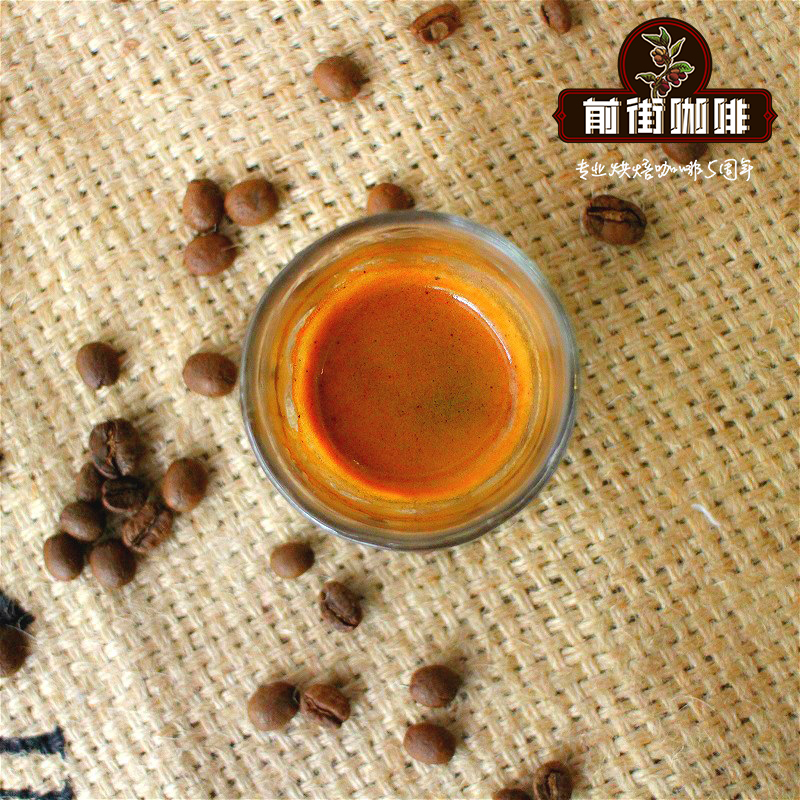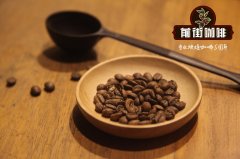The types and characteristics of coffee what kind of coffee do you usually order when you go to a coffee shop?

Professional coffee knowledge exchange more coffee bean information please follow the coffee workshop (Wechat official account cafe_style)
Dare you say you are a coffee expert? There are hundreds of kinds of coffee, including light roasting, hand-brewing and self-baking coffee. this trend is gradually sweeping from the United States, and professional-led hand-brewing coffee has spread at an irresistible speed. If you are addicted to coffee, you must understand this basic course of coffee!
1. Espresso Espresso
Brewed in an Italian coffee machine and brewed with high-pressure water, the coffee powder is more full-bodied than other methods and has a strong and rich taste due to its higher concentration of suspended matter and reddish-brown coffee fat foam (crema) on the surface. The amount of espresso can be single (single), double (double) and triple (triple), and the proportion of ground coffee powder is about 7, 14, and 21 grams.
Capacity: 25ml brewing time: 25 seconds caffeine: ★★★☆☆
two。 Herbalife blue Espresso Con Panna
It is a kind of Italian fancy coffee, and the shape of black and white can be seen clearly in the transparent glazed cup, so it is also called Snow Mountain Coffee. The most important feature of Herbalife blue is to use cold cream with hot espresso Espresso. Generally speaking, there is no need to stir before drinking Herbalife blue, so that the strong and full-bodied Espresso is mixed with sweet cream and tastes smooth and supple. In addition, the hot and cold entrance also has a different flavor.
Capacity: 60ml brewing time: 30 seconds caffeine: ★★★★☆
3. American Coffee Americano
American coffee can be said to be the general name of black coffee. Whether it is a French filter pot or hand-brewed coffee can be generally referred to as American style. In Italy, American coffee is usually a cup of hot water next to Espresso that you can add. The ratio of espresso to water depends on your taste. At about 1:12, American coffee tastes light, does not have the strong taste of espresso, and is more acceptable to non-coffee drinkers.
Capacity: 360ml brewing time: 30 seconds caffeine: ★★★☆☆
4. Latte Caff è latte
Latte means milk in Italian. Never call a latte directly in Italy, otherwise the waiter will bring you a cup of hot milk instead of coffee. Thus it can be seen that milk is the protagonist of this cup of coffee, and the standard ratio is about 1max 6 espresso, 4 pm 6 hot milk, and 1 ram 6 bubbles. In addition, cinnamon, vanilla and other different flavors can be added. Due to the high proportion of milk and thick foam, the taste is more sweet, supple and meticulous.
Capacity: 240ml brewing time: 60 seconds caffeine: ★★★☆☆
5. Cappuccino Cappuccino
Cappuccino in Italian means foamed coffee, as well as the loose robes and pointed hats of St. Francis (like the brown of cappuccino). The difference between cappuccino and latte is the blending ratio. Espresso Espresso, fresh milk and milk foam are each at 1:1:1. First, pour in espresso, hot milk, and finally spread with a thick layer of milk bubble, then sprinkle with cinnamon powder, cocoa powder or citrus and lemon peel to add flavor.
Capacity: 180ml brewing time: 60 seconds caffeine: ★★★☆☆
6. Mocha Caf é Mocha
Also belongs to a kind of Italian fancy coffee, the base is espresso, which is matched with chocolate syrup, fresh milk and milk foam in a ratio of 1 to 0.5 and 1.5 to 1. Chocolate can also be added in the form of white chocolate. The most obvious flavor of mocha coffee is the slightly bitter aroma of cocoa, and some fancy mocha coffee can also be decorated with cream, cocoa powder and marshmallow. Used to enhance the characteristics and aroma of coffee.
Capacity: 240ml brewing time: 2 minutes caffeine: ★★★☆☆
7. Caramel macchiato Caramel Macchiato
Italian means imprint, like a sweet imprint, containing espresso, vanilla and caramel, with three aromas at a time. Generally speaking, it cannot be stirred before drinking, so there will be sweet milk bubbles and thick caramel sauce on the lips, followed by vanilla milk bubbles, followed by rich espresso, but caramel macchiato has a higher proportion of espresso than lattes and cappuccinos.
Capacity: 240ml brewing time: 1 minute 30 seconds caffeine: ★★★★☆
8. Irish Coffee Irish Coffee
Some people say that Irish coffee is mixed wine, not coffee, in fact, it also makes sense, because Irish coffee itself is to add whisky, in addition to the aroma of coffee and wine. The practice of Irish coffee is usually to pour sugar, then burn the alcohol in whisky to slightly caramel sugar juice, then espresso, and finally add whipped cream, the charming aroma drifts into the nose in the air, collides with each other and harmonizes with each other. It's best for a warm cup in winter.
Capacity: 180ml brewing time: 3 minutes caffeine: ★★★★☆
9. Viennese coffee Viennese coffee
Viennese coffee, as its name suggests, is the favorite way of drinking coffee among Viennese in Austria. First, sprinkle a thin layer of granulated sugar or fine rock sugar on the bottom of the warm coffee cup, then pour in the espresso and decorate the fresh cream, which tastes like a trio, drinking the bitterness and rich aroma of espresso in the fine syrup, and finally the warm and fresh cream taste in the coffee; as for the American Viennese coffee, it also adds chocolate syrup, which is certainly higher in calories!
Capacity: 240ml brewing time: 1 minute 30 seconds caffeine: ★★★☆☆
Important Notice :
前街咖啡 FrontStreet Coffee has moved to new addredd:
FrontStreet Coffee Address: 315,Donghua East Road,GuangZhou
Tel:020 38364473
- Prev

Can I add milk to my hand coffee? What's the difference between hand-brewed coffee and Italian coffee?
Professional coffee knowledge exchange more coffee bean information Please follow the coffee workshop (Wechat official account cafe_style) if you go to the coffee bean roaster to look for coffee, you won't find anything like mocha or latte. Because it's seasoned and processed coffee. What can be found in the coffee baking factory is some so-called single coffee and espresso. Most of the individual coffee is made by origin or raw.
- Next

Where did the coffee come from? The origin of coffee is explained by isotopes. The origin and history of coffee
Professional coffee knowledge exchange more coffee bean information Please follow the coffee workshop (Wechat official account cafe_style) drink a cup of coffee to wake up the day, is undoubtedly a portrayal of the lives of many modern civilized people. You may not know that people have been drinking coffee for more than ten centuries. Due to the age, the origin of coffee can no longer be examined, and there is a lack of related historical events.
Related
- Beginners will see the "Coffee pull flower" guide!
- What is the difference between ice blog purified milk and ordinary milk coffee?
- Why is the Philippines the largest producer of crops in Liberia?
- For coffee extraction, should the fine powder be retained?
- How does extracted espresso fill pressed powder? How much strength does it take to press the powder?
- How to make jasmine cold extract coffee? Is the jasmine + latte good?
- Will this little toy really make the coffee taste better? How does Lily Drip affect coffee extraction?
- Will the action of slapping the filter cup also affect coffee extraction?
- What's the difference between powder-to-water ratio and powder-to-liquid ratio?
- What is the Ethiopian local species? What does it have to do with Heirloom native species?

